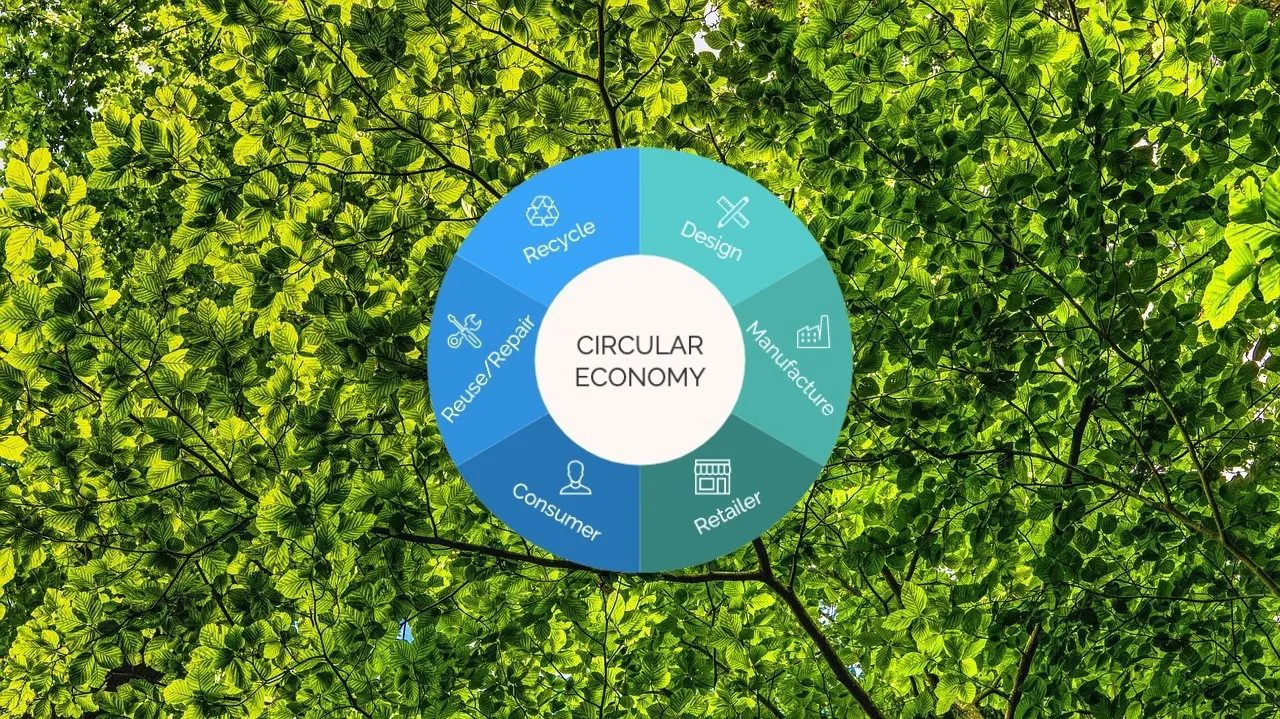In honour of Circular Economy Week London, here is a little explanation of what the circular economy actually is and why it’s so important we all start to adopt it in our everyday lives.
Currently, our economic system is linear - from the natural resources and raw materials to the disposal of things when they reach the end of their life. We take, make and dispose of.

What is the circular economy?
The Circular Economy is a system whereby everything is designed in a way that can be re-used with minimal environmental impact.

Watch our video on What is the Circular Economy?
Why is a more circular economy so important?
A Circular Economy creates new opportunities for economic growth, makes better use of finite resources and reduces waste, and will help towards reducing the environmental impacts of production and consumption.
The Circular Economy (CE) can be considered as a global redesign, renovating the functions of resources within the economy, e.g. circular business model innovation could mean waste coming from factories could become a treasured input to an alternative process.
Products can be upgraded, reused or repaired rather than thrown away. Furthermore, CE provides vast business opportunities and the potential for boosting economic growth. Policy-makers need to focus on fast-tracking the transition to a CE because of pressing global challenges, water scarcity and climate change.
In order to move towards a CE, a shift in the way products are made is needed; sustainability needs to become the centre of business and industrial models. A CE could be a global level solution. If the EU manufacturing sector started using circular business models, that could lead to $630 million of material cost savings per year by 2025.
Circular Economy and the Sustainable Development Goals (SDGs):
The CE has the power to increase employment, especially in developing countries.
It is important to note that the concept of a CE is not very present in current development discourse; even though it has the possibility of alleviating people out of poverty, protecting the environment and contributing towards the Sustainable Development Goals (SDGs).
CE principles can even accelerate the progress of the SDGs, this is presented below in the diagram, showing the direct contributions of CE principles towards the goals:

A CE strategy could help lower-income countries ‘leapfrog’ to a more sustainable development pathway that avoids locking in resource-intensive practices and infrastructure and moves towards recycling existing materials, relying less on limited natural resources, and adopting more sustainable practices like using renewable energy sources during production.
Businesses using a Circular Economy model:
Luckily, some businesses are already using a Circular Economy business model, and they will hopefully inspire more businesses to do the same.
Here are a few examples:
MUD Jeans: https://mudjeans.eu/
Elvis & Kresse: https://www.elvisandkresse.com/
Wear the Walk: https://www.wearthewalk.co.uk/
Garçon Wines: https://www.garconwines.com/
Ooho: https://www.notpla.com/
Learn more about the circular economy model:
If you are interested in learning more about the Circular Economy, join the Circular Economy Club (it's free!).
There are many Circular Economy events happening all around London this week. Most of them are free so be sure to check them out!
Remember to Re-Use, Reduce and Recycle!
Check our video about Circular Economy and get inspired by some good examples!



